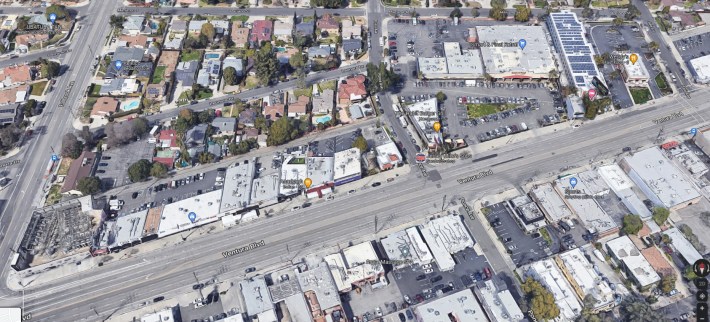In July, the city of L.A. hosted a groundbreaking event for its Reimagine Ventura Boulevard project. The project is located in Woodland Hills, at the western edge of the San Fernando Valley, extending a half-mile between Royer Avenue and Sale Avenue. The city is removing two of Ventura's six travel lanes (called a road diet) to reallocate space to add more on-street car parking.
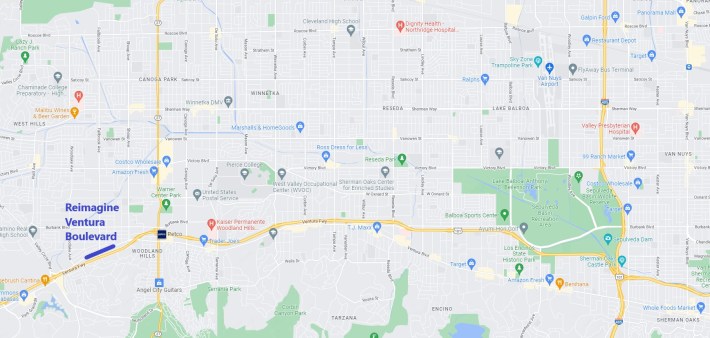
L.A. City Councilmember Bob Blumenfield and the city Transportation Department (LADOT) have been workshopping and studying and designing this project for many years. Back in 2017, CiclaValley posted enthusiastically about how he hoped that protected bike lanes, then under consideration for Ventura, would be "a new model for the rest of Ventura Blvd."
Blumenfield and LADOT have tried to put a good spin on the project, calling it Reimagine Ventura Boulevard [Blumenfield project webpage, image-rich project storymap site] and drawing attention to pedestrian "amenities" like "enhanced landscaping" and "enhanced crosswalks." But the project grew out of the city's Ventura Boulevard Diagonal Parking Feasibility Study. Adding more parking encourages more driving by making it easier for more drivers to drive more often to the area.
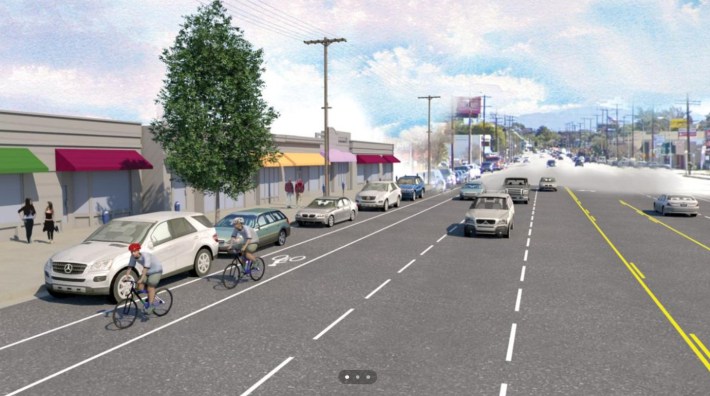
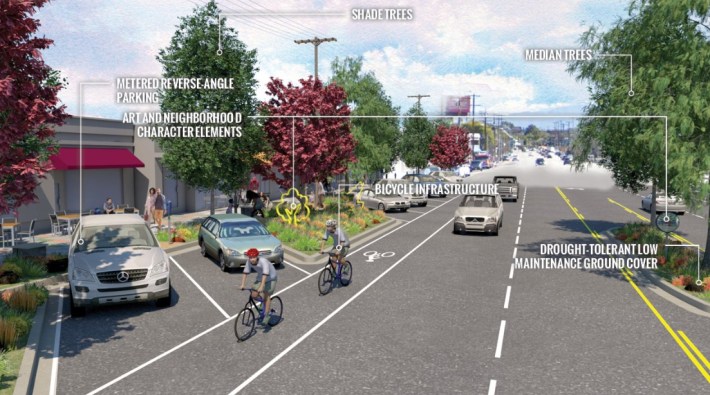
LADOT recently tweeted touting the project as "making Ventura Boulevard safer for cyclists and pedestrians."
We're making Ventura Blvd in #WoodlandHills safer for cyclists and pedestrians with the #ReimagineVentura project! We've worked with Councilmember @BobBlumenfield to design a street project that creates a sense of place and serves one of LA's most iconic Boulevards! #TheValley pic.twitter.com/nzS9WmtC1t
— LADOT (@LADOTofficial) August 29, 2022
But it is difficult to see the project making Ventura Boulevard safer for cyclists. This stretch of Ventura already has unprotected bike lanes. The project just keeps these existing lanes.
The parking study analyzed protected bike lanes, but ultimately recommended against them, because more car parking could be squeezed in if the city omitted actually dedicating any space making Ventura any safer for bicyclists.
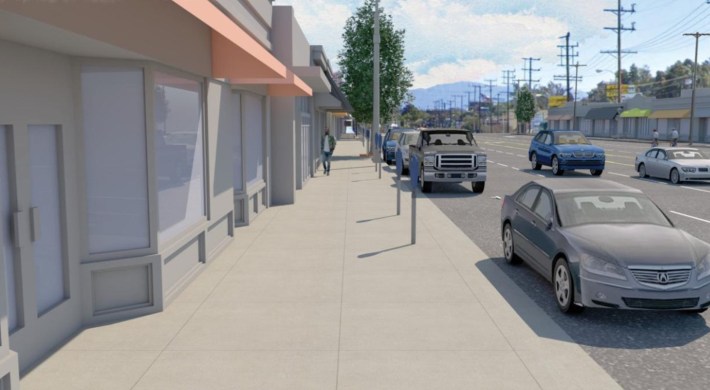
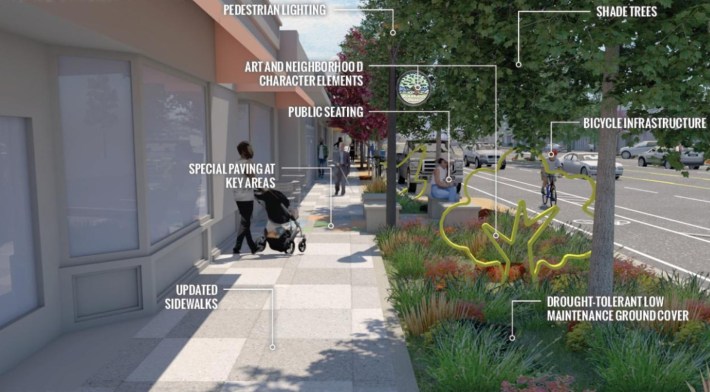
There are improvements for pedestrians: "updated sidewalks," some bulb-outs at corners, some landscaped areas between some parking spaces. Yes, the additional trees are a needed and welcome addition. But when the city is redoing curbs, why not really expand space allocated to walking? If the city is serious about supporting walking (it's not) then projects like this should reallocate roadway space to wider sidewalks. Reimagine Ventura feels like a few pedestrian spaces have been sprinkled among expanded parking, when a truly pedestrian-priority project should have some parking sprinkled among expanded space for walking.
The city looked at a 100-foot wide roadway, with 90 feet already dedicated to cars (and 10 feet worth of bike lane), and could hardly find any space it could reallocate away from the cars. Shuffling space around from one car use (cars speeding through public space) to another car use (cars stopped in public space) feels like rearranging deck chairs on the Titanic. Especially at a time when the climate emergency is scorching the West Valley. At the time this is being written, much of Southern California is experiencing brutal record temperatures 10-18 degrees warmer than usual. That record heat is being driven by greenhouse gas emissions, which for L.A. County, the majority of which come from the transportation sector, overwhelmingly from tailpipes from cars... more of which will soon be encouraged to park along this stretch of Ventura Boulevard.
In one of L.A.'s more car-centric suburban council districts, Councilmember Blumenfield has had a good record on funding and completing worthwhile multi-modal mobility projects (including Reseda Boulevard and Connecting Canoga Park), especially bikeways (including the L.A. River path and Winnetka lanes), that have been strategic. Those other projects have built out facilities that smartly connect to extend existing bus and bike networks.
Unfortunately, this stretch of Ventura Boulevard is a missed opportunity, a step away from multi-modal solutions. There are positive aspects of the Reimagine Ventura Boulevard project. It is not awful. It just lacks... imagination.
